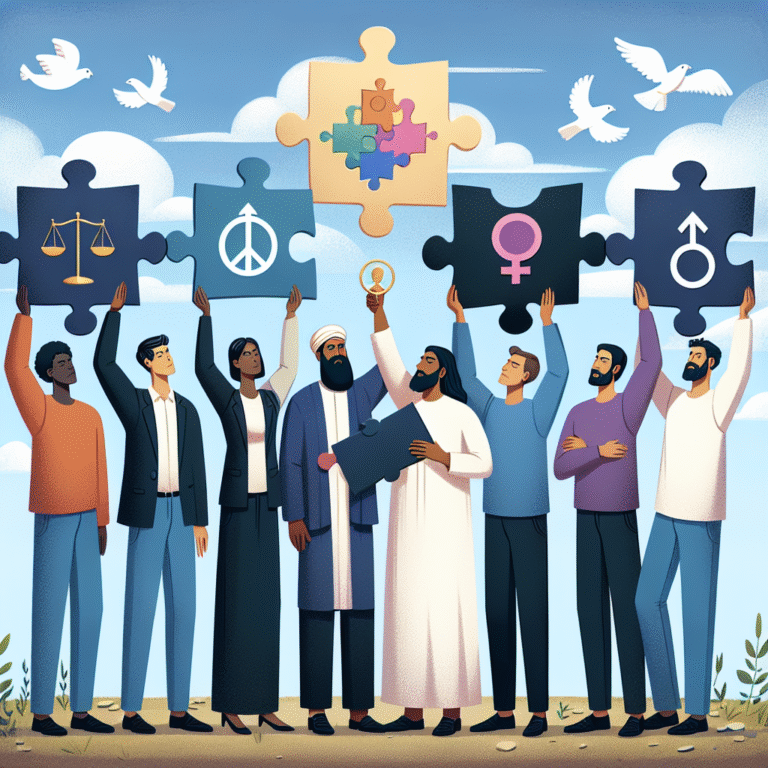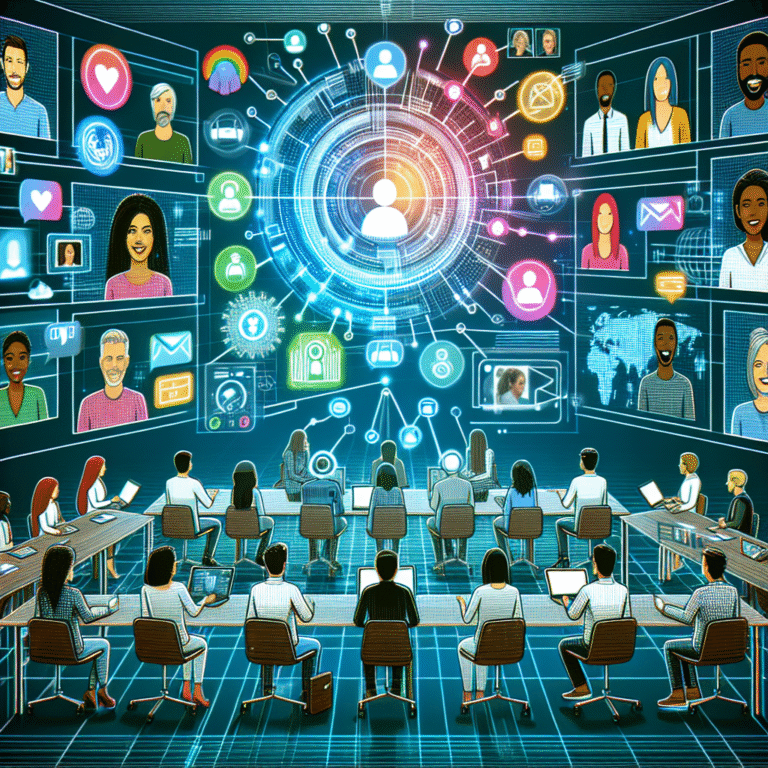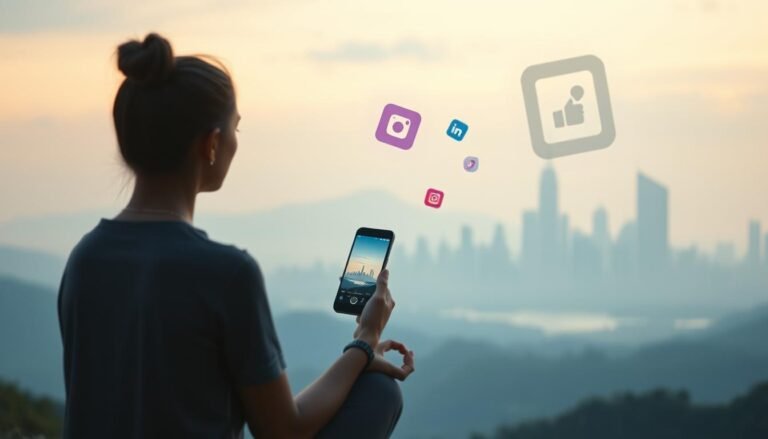Introduction
In today’s rapidly evolving societal landscape, the complexity of gender identity continues to emerge as a pivotal topic of discussion. With movements advocating for inclusion, understanding, and respect at the forefront, the importance of examining gender identity is clearer than ever. This exploration goes beyond traditional disciplines and delves into the cultural nuances that shape our understanding and acceptance of various gender identities. "Beyond Stereotypes: Examining Gender Identity Through a Cultural Lens" is not just about challenging preconceived notions; it’s about appreciating the rich tapestry of experiences that inform these identities.
Understanding gender identity through a cultural lens allows us to move past reductionist stereotypes and embrace a more comprehensive perspective that enriches our communities and dialogues. As we embark on this journey, we will explore various perspectives, case studies, and data visualizations to provide insights that will stimulate thought and encourage change.
The Multifaceted Nature of Gender Identity
Gender identity is inherently complex. It encompasses not only a person’s internal sense of self but also their experiences in relation to societal norms, expectations, and cultural contexts. Across different cultures, understandings of gender can vary widely. For instance, many Indigenous cultures recognize multiple gender identities beyond the binary of male and female. The Two-Spirit identity among Native American communities exemplifies this cultural variation and challenges the dominant binary framework.
Table 1: Gender Identities Across Cultures
| Culture | Recognized Identities | Description |
|---|---|---|
| Native American | Two-Spirit | A term used to describe a person embodying both masculine and feminine qualities. |
| South Asian | Hijra | A recognized third gender in South Asian communities, often viewed as spiritually significant. |
| Southeast Asian | Bakla / Fa’afafine | Cultural identities that encompass both masculine and feminine traits. |
| Western Cultures | Non-binary / Genderqueer | Identities that exist outside the traditional male/female binary. |
The concept of gender fluidity becomes pivotal in this discussion, as it highlights how identity can shift and change depending on the individual’s personal journey and cultural influences. This very fluidity is often met with resistance, showcasing the importance of cultural frameworks in understanding gender.
Case Study: The Two-Spirit Tradition
The Two-Spirit identity offers a profound example of cultural recognition of gender identity beyond the binary frameworks often imposed in Western societies. In many Indigenous cultures, Two-Spirit individuals were valued members of the community, fulfilling unique roles and responsibilities.
Analysis
The Two-Spirit identity emphasizes the fluidity of gender and the importance of cultural acceptance in forming one’s identity. The historical context reveals that many Indigenous communities thrived with a pluralistic view of gender; when colonizers imposed binary perspectives, it severely altered the understanding and acceptance of diverse gender identities.
This example not only reveals how historical contexts shape current realities but underscores the need for inclusivity when discussing gender today.
The Role of Language in Gender Identity
Language plays a crucial role in shaping understandings of gender. Different languages have specific terms and structures that reflect cultural perceptions of gender.
For instance, many Indigenous languages have gender-inclusive terms that differ from the gendered language prevalent in English. This linguistic diversity encourages an appreciation for non-binary identities and allows for a more fluid conversation around gender.
Table 2: Language and Gender Identity
| Language | Gender Structure | Recognition of Non-Binary Concepts |
|---|---|---|
| English | Gendered | Limited; often defaults to binary |
| Spanish | Gendered nouns | Introductions of “elle” and “todxs” |
| Finnish | Gender-neutral | No gendered pronouns |
| Turkish | Gender-neutral | Limited binary distinctions |
The implications of language extend beyond mere communication; they shape individual identity and influence societal norms. When we recognize this, we begin to see how vital it is to cultivate language that is inclusive and reflective of diverse identities.
Cultural Appropriations vs. Cultural Celebrations
A significant issue in the discourse surrounding gender identity is the distinction between cultural appropriation and cultural celebration. Often, practices and identities that are sacred in one culture can be misappropriated or misrepresented in another.
The Case of Pride
Pride parades worldwide often highlight rainbow flags and drag performances, celebrating LGBTQ+ identities. However, one must ask: Are these elements being celebrated for their cultural significance, or have they become commodified?
Analysis
Understanding the cultural roots of specific practices, particularly in relation to the LGBTQ+ rights movement, is essential. This examination illuminates an ongoing tension in societal discussions about gender identity—balancing celebration and respect.
When we look at these communal celebrations through a cultural lens, we can begin to dissect where respect can be given and where appropriation might occur, thereby enriching our understanding of gender identity’s spectrum.
The Intersectionality of Gender Identity
Examining gender identity through a cultural lens naturally leads to the incorporation of intersectionality. Intersectionality recognizes that individual experiences are shaped by interconnected social categorizations, such as race, class, and gender identity.
Case Study: The Experiences of Trans Women of Color
Trans women of color face unique challenges that intersect race, gender, and socioeconomic status. The experiences of Marsha P. Johnson and Silvia Rivera underscore the vital role that intersectionality has in understanding gender identity.
Analysis
Their activism not only highlights gender identity struggles but also brings to light how societal structures can oppress individuals based on multiple facets of their identity. The struggles they faced and continue to face are indicative of broader systemic patterns, emphasizing the need for a more inclusive approach that considers intersectionality in activism and policy.
The Importance of Education and Awareness
Outreach and education are essential in expanding understanding and acceptance of diverse gender identities. By incorporating educational programs that raise awareness about gender identity and its cultural implications, we can facilitate more informed discussions.
Effective Strategies for Education
1. Community Workshops
Engaging communities through workshops that explore gender identity through cultural contexts can inspire mutual understanding and respect.
2. Inclusive Curriculum
Incorporating discussions of gender diversity into educational curricula can normalize non-binary identities and respect cultural differences.
3. Collaboration with Advocacy Groups
Partnering with local advocacy groups can amplify voices that may otherwise be marginalized in mainstream discussions about gender identity.
Conclusion
"Beyond Stereotypes: Examining Gender Identity Through a Cultural Lens" is a multidimensional journey that requires us to challenge our preconceived notions and embrace a broader understanding of gender. It is only by moving past stereotypes and towards a more inclusive perspective that we can foster a society that celebrates diversity in all its forms.
To facilitate this change, we must engage in open discussions, educate ourselves and others, and promote practices that honor every individual’s identity. The richness of human experience is reflected in our varied identities; by examining these through a cultural lens, we empower ourselves and others to recognize the beauty in our differences.
Actionable Takeaway
Let us commit to a personal journey that values education, listening, and advocacy. Encouraging dialogue that respects and recognizes diverse experiences will enrich our communities and foster a world that honors every individual’s identity.
FAQs
1. What is gender identity?
Gender identity refers to an individual’s personal sense of their gender, which may or may not align with the sex they were assigned at birth.
2. How does culture affect gender identity?
Culture plays a significant role in shaping our perceptions of gender. Different cultures have various ways of understanding and celebrating gender, influencing identity formation.
3. What is the importance of intersectionality in discussing gender identity?
Intersectionality highlights how various aspects of a person’s identity, such as race and socioeconomic status, intersect and influence their experiences. Understanding these intersections allows for a more comprehensive view of identity struggles.
4. How can we prevent cultural appropriation in discussions of gender identity?
By understanding and respecting the cultural significance of gender identities and practices, we can celebrate them authentically rather than misrepresenting or commodifying them.
5. What are some ways to educate others about gender diversity?
Engaging in open dialogues, attending workshops, and incorporating inclusive materials into educational curricula are effective strategies for educating about gender diversity.
The exploration of gender identity through a cultural lens is not merely academic; it’s a call to action that deepens our understanding and fosters a more inclusive world. Together, we can forge a path that respects, celebrates, and elevates all identities, reminding ourselves that every person deserves recognition and respect.

















